11 Sep –
14 Nov 2020
Andreas Gursky
Andreas Gursky
Monika Sprüth and Philomene Magers are pleased to present a substantial exhibition of new photographs by Andreas Gursky, his first new body of work in almost three years, in which he takes up a range of themes that he has investigated for decades. Despite the continuity in theme and subject matter—our built environment, humankind’s impact on the natural world—the new pictures embed his analyses in current events, offering altered settings and situations to explore.
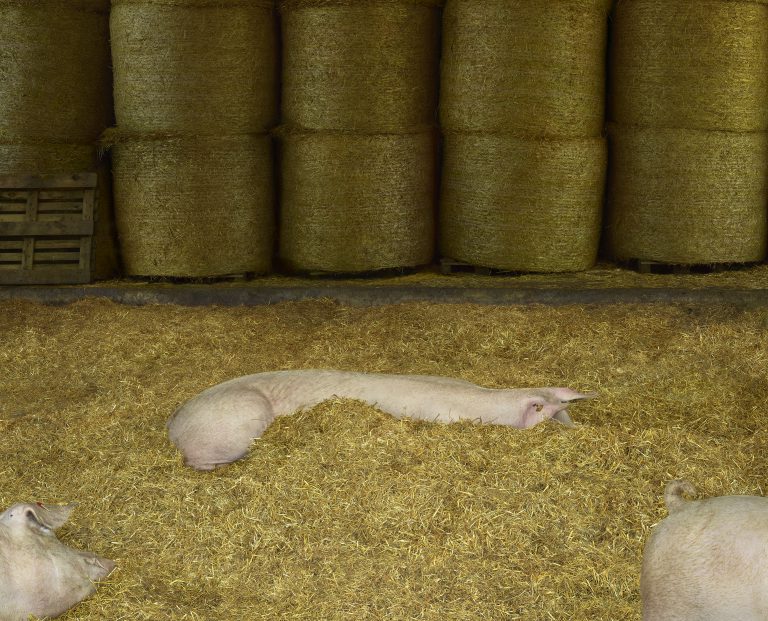
Andreas Gursky, Pigs I, 2020. Copyright Andreas Gursky / VG Bild-Kunst, Bonn, 2020. Courtesy Sprüth Magers
Rhine III (2018) revisits his important work Rhine II (1999)—the dimensions, setting and composition of both are all almost identical. And yet, just twenty years later, the mood is drastically altered. The drought of summer 2018 reduced the river to a record low, and the new picture offers a dystopian vision of the once flourishing river landscape. Cruise (2020) also brings to mind an important earlier work, Paris, Montparnasse (1993). The same grid-like structure appears, but instead of a large apartment building, here there are hundreds of windows on the side of an enormous cruise ship. As with the Paris picture, Cruise shows a human environment atomized into a modernist architectural grid.
Politik II (2020) directly follows Gursky’s work Rückblick (2015), also included in the exhibition, to create a new series that looks at political structures. Over a period of several months, Gursky closely observed the activities of the members of parliament in the German Bundestag. Politik II features thirteen politicians in animated conversations, the figures filling the entire width of the picture. The arrangement and number of people in the image, as well as the fact that only one person stands aside, looking into a newspaper, emphasizes the echoes between Gursky’s picture and a typical depiction of the Last Supper. While the humor is only faintly perceptible in Rückblick—as expressed, for example, in the plume of smoke above Helmut Schmidt as an identifying feature of the former chancellor—the humor is bolder in Politik II. Who takes on the role of the savior in this implied depiction of the Last Supper? Is it Angela Merkel, who has moved slightly out of the center of the picture, or Anton Hofreiter, whose shoulder-length hair alone seems to qualify him?
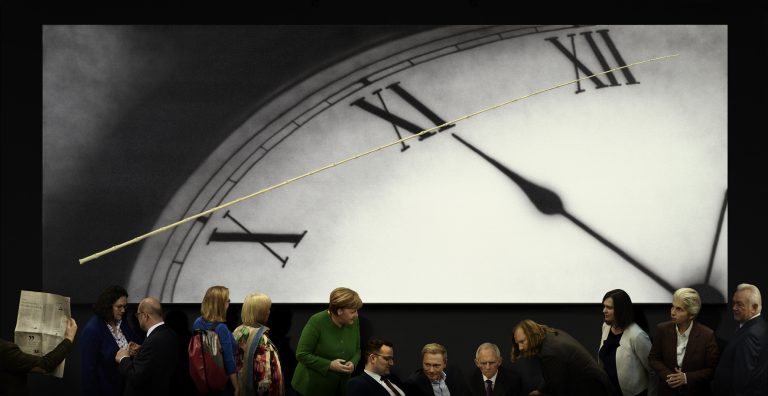
Andreas Gursky, Politik II (Politics II), 2020, Inkjet-print, Diasec, 217.4 × 402.4 × 6.2 cm (framed), 85 5/8 × 158 3/8 × 2 3/8 inches (framed). Copyright Andreas Gursky / VG Bild-Kunst, Bonn, 2020. Courtesy Sprüth Magers
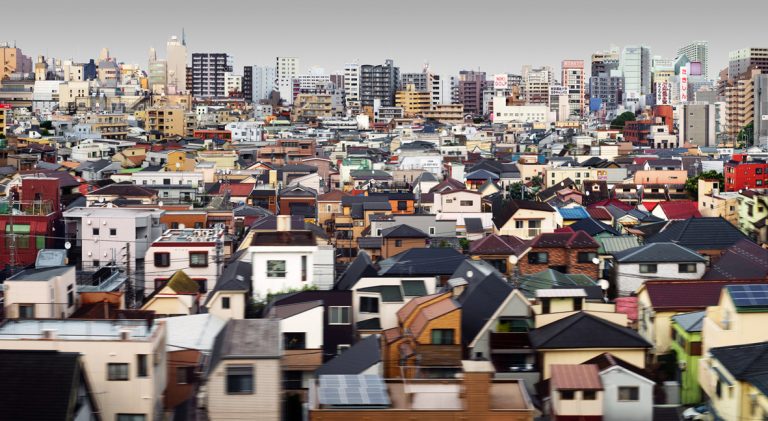
Andreas Gursky, Tokyo, 2017, Inkjet-Print, Diasec, 216 × 394 cm (image), 85 × 155 1/8 inches (image), 236.6 × 414.7 × 6.4 cm (framed), 93 1/8 × 163 1/4 × 2 1/2 inches (framed). Copyright Andreas Gursky / VG Bild-Kunst, Bonn, 2020. Courtesy Sprüth Magers
As early as 1994, Gursky photographed the high-rise headquarters of HSBC in Hong Kong. Designed by British architect Sir Norman Foster, the building is still a dominant feature of the Hong Kong skyline. While one can still clearly see the employees on the different floors in Hong Kong Shanghai Bank (1994), in Hong Kong Shanghai Bank I (2020) a red-orange diode curtain obscures the windows, a screen against prying eyes. In Hong Kong Shanghai Bank II (2020), the façade seems to reflect the current events in front of the bank: A sea of colorful umbrellas, with patterns, faces and slogans of the 2014 Umbrella Movement. In another photograph, Hong Kong Shanghai Bank III (2020), words in horizontal bands stretch across the façade of the building. Highlighting everything from cultural figures to political flash points, the words invite the reader to reflect on the powerful structures that filter our interpretation of historical events.
In October 2019, Gursky’s portrait Jonathan Ive was unveiled at the National Portrait Gallery, London, showing the Apple designer in the company’s new headquarters, which was designed by Foster + Partners in close cooperation with Sir Ive. Gursky made a second photograph, Apple (2020), at the exact same spot, which will be shown in the Berlin exhibition. Apple features iPhones and various generations of computers in the same position as the designer in the earlier photograph, but placed on pedestals and lined up along the curved window as if in a museum.
The urban living space, and the constant balancing of efficiency with quality in contemporary life, is one of the themes Gursky addresses in his work Bauhaus (2020). The functional building with the logo of the DIY store, commonplace across Germany, is shown by the artist in its cold and precise aesthetics, which at the same time brings to mind the famous art school in Weimar. The functional, minimalist architecture designed for modern living is diametrically opposed to the mood in Pigs (2020). Here, Andreas Gursky portrays the animals in an unusual close-up, seemingly warm and comfortable in a bed of golden hay.
Alongside his new works, previous pictures such as Antarctic (2010), Utah and Tokyo (both 2017) are also on display, and this exhibition overall offers a chance to observe a range of continuities and new developments in the artist’s oeuvre.
Exhibited for the first time at the Berlin gallery, the group of new photographs will join many of his most iconic works for the artist’s retrospective at MdbK Leipzig in December 2020.
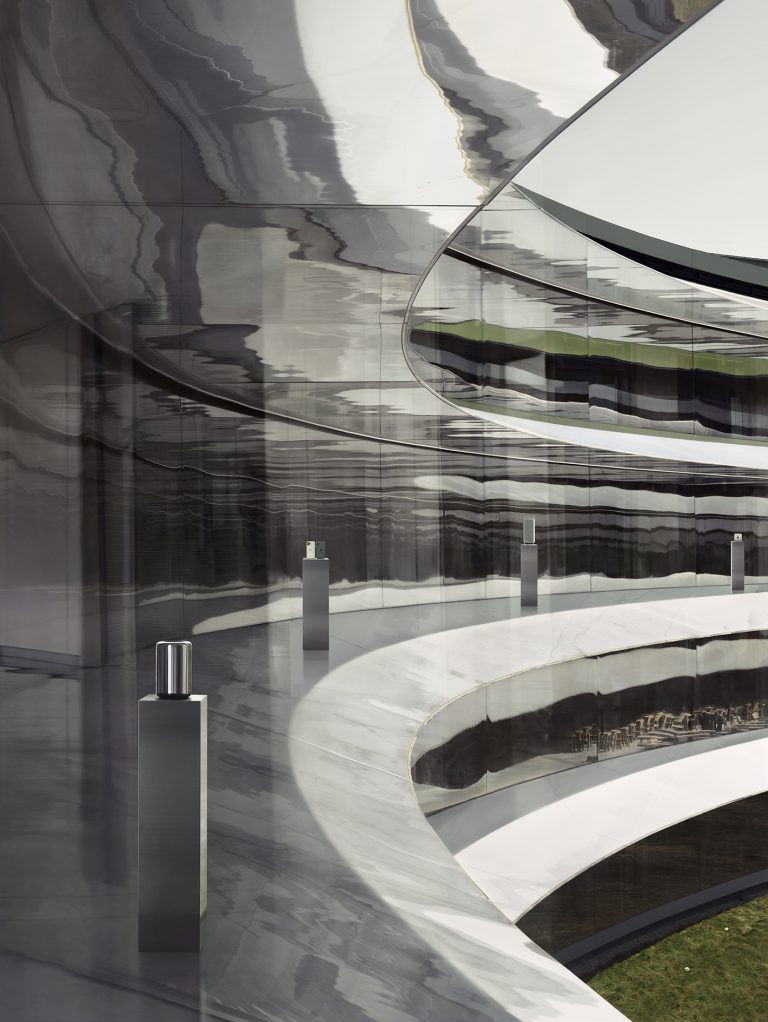
Andreas Gursky, Apple, 2020. Copyright Andreas Gursky / VG Bild-Kunst, Bonn, 2020. Courtesy Sprüth Magers
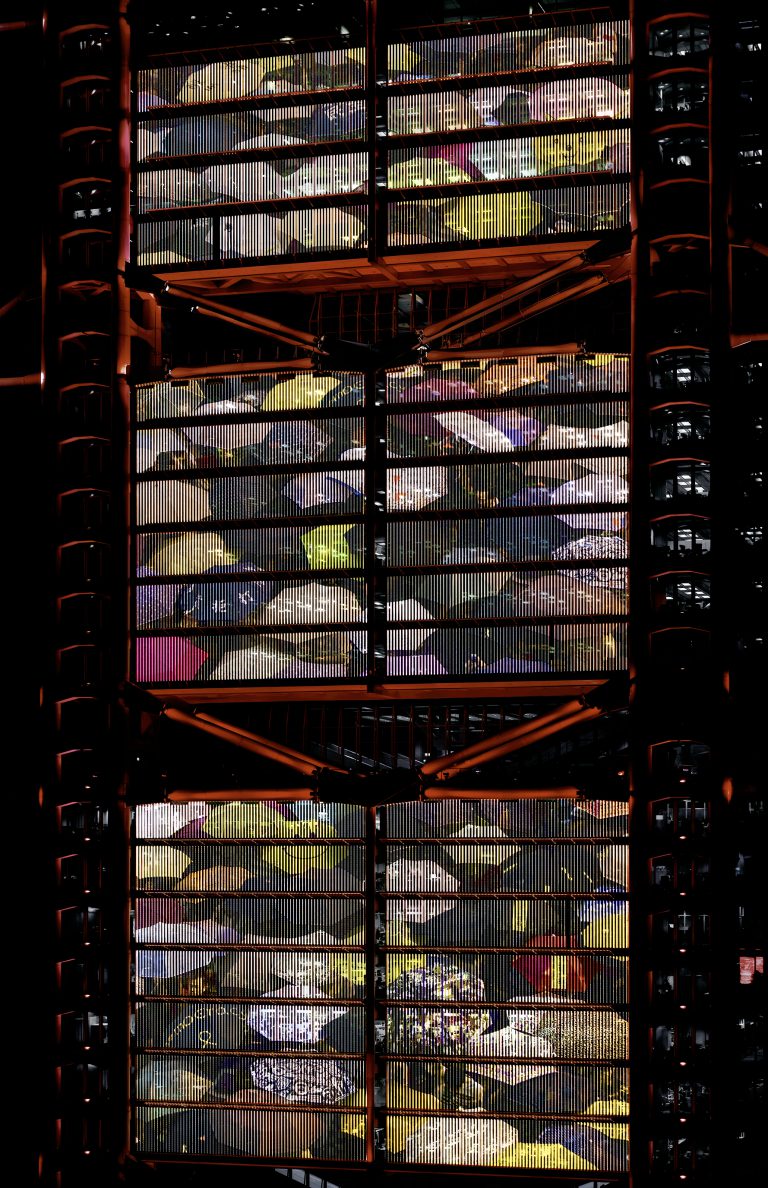
Andreas Gursky, Hong Kong Shanghai Bank II, 2020, Inkjet-print, Diasec, 307 × 205.7 × 6.2 cm (framed), 120 7/8 × 81 × 2 3/8 inches (framed). Copyright Andreas Gursky / VG Bild-Kunst, Bonn, 2020. Courtesy Sprüth Magers
Andreas Gursky (*1955, Leipzig) lives and works in Dusseldorf. Solo exhibitions include his upcoming retrospective at MdbK Leipzig (December 2020), Hayward Gallery, London (2018), National Museum of Art, Osaka (2014), National Art Center, Tokyo (2013), Stiftung Museum Kunstpalast, Dusseldorf (2013) and Louisiana Museum of Modern Art, Copenhagen (2012). A solo exhibition organized by the Museum of Modern Art, New York (2001) toured to Centro de Arte Reina Sofia, Madrid, Centre Georges Pompidou, Paris, MCA, Chicago and SFMOMA, San Francisco. His first retrospective, Retrospektive 1984–2007, was shown at Haus der Kunst, Munich and toured to Istanbul Modern and Sharjah Art Museum (2007), then to Ekaterina Foundation, Moscow and National Gallery of Victoria, Melbourne (2008). Andreas Gursky: Werke 1980–2008 opened at the Museum Haus Esters Haus Lange, Krefeld (2008) and toured to Moderna Museet, Stockholm and Vancouver Art Gallery (2009).
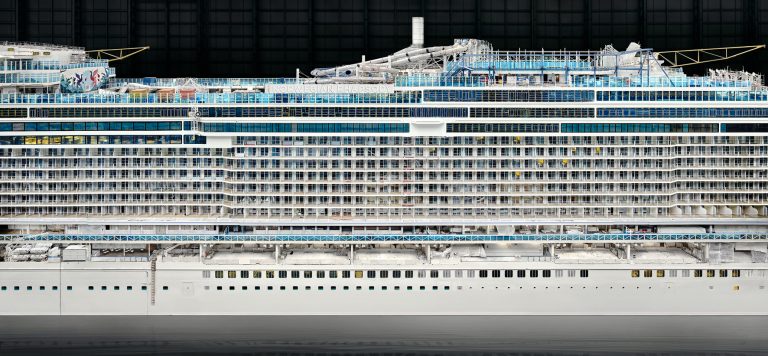
Andreas Gursky, Kreuzfahrt (Cruise), 2020, Inkjet-print, Diasec, 228 × 468 × 6.7 cm (framed), 89 3/4 × 184 1/4 × 2 5/8 inches (framed). Copyright Andreas Gursky / VG Bild-Kunst, Bonn, 2020. Courtesy Sprüth Magers
